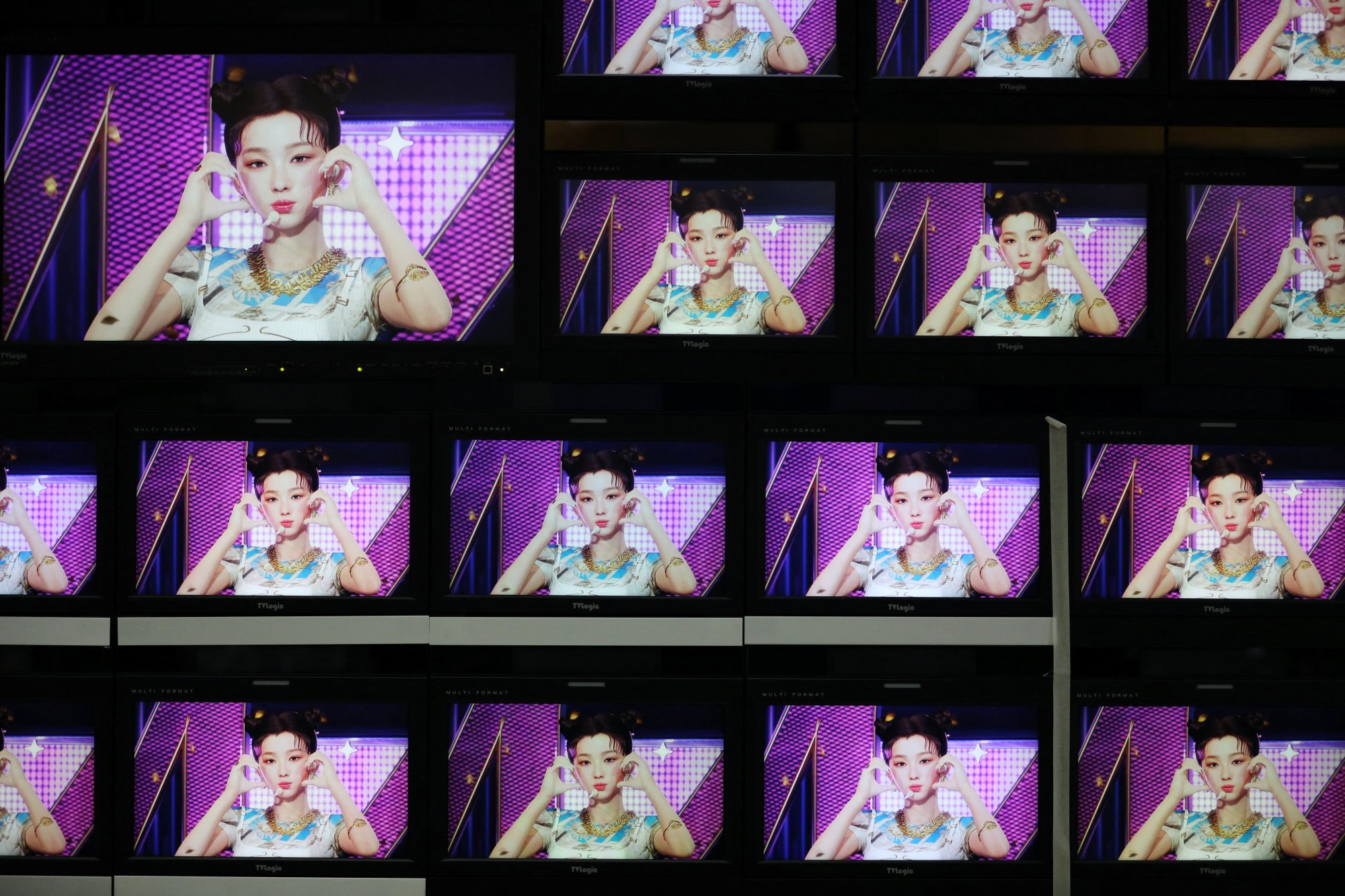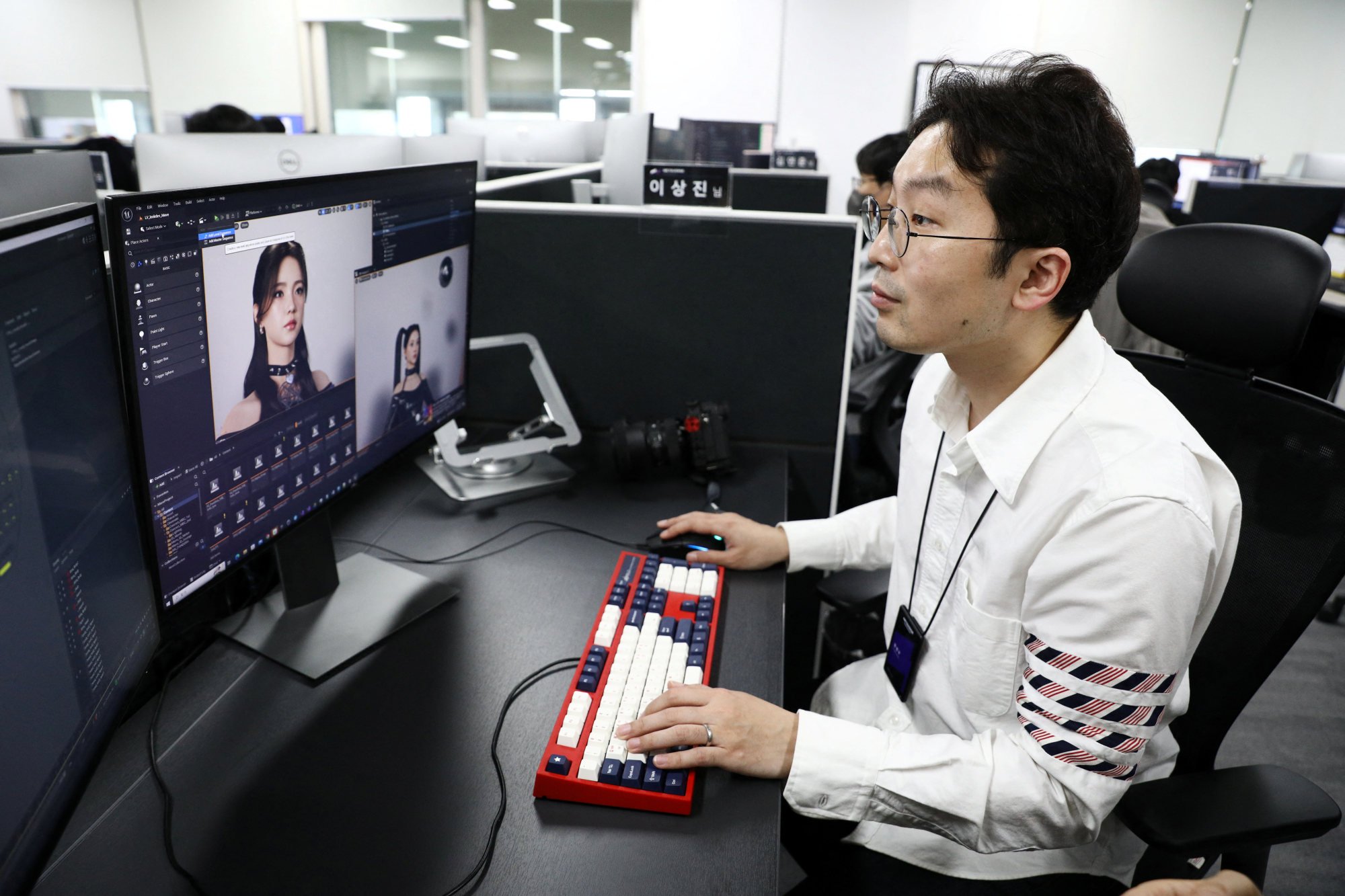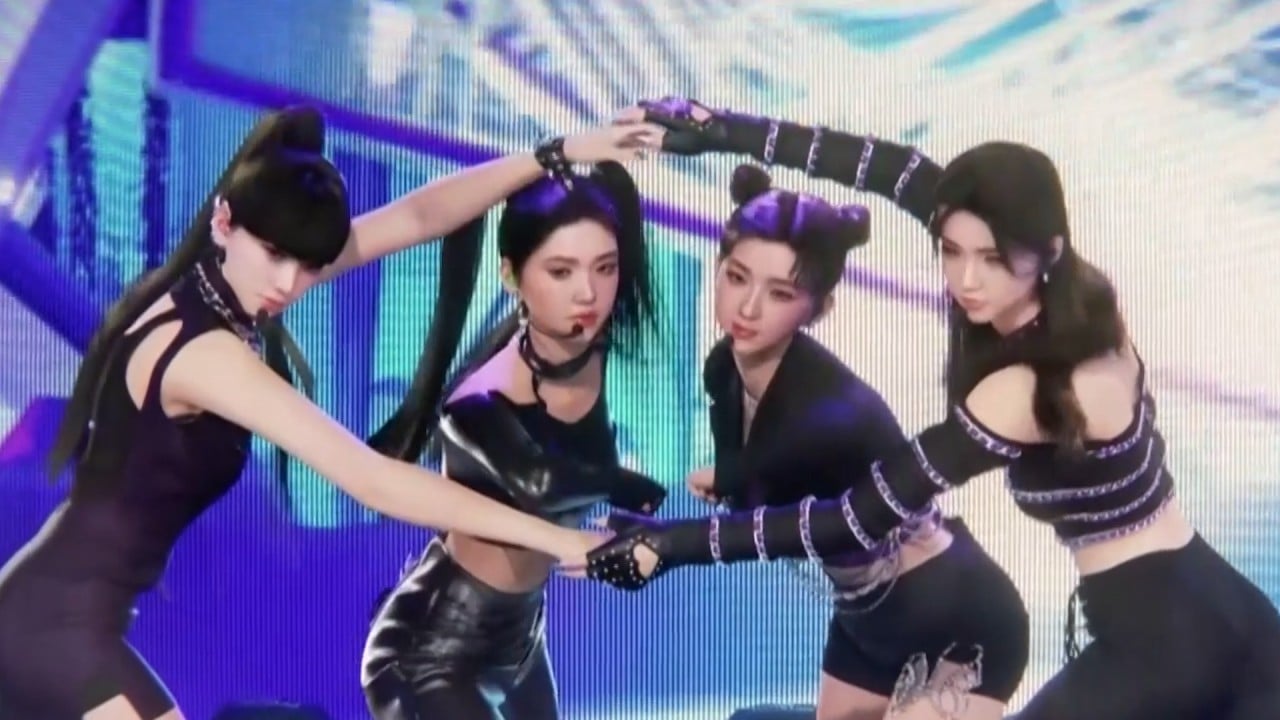
Meet Mave:, the AI-powered K-pop girl group that look almost human and speak four languages
- The four-member virtual K-pop girl group Mave: have already racked up 20 million views for their debut single ‘Pandora’
- The group represent a serious push by tech giant Kakao, the project’s backers, to become a dominant force in entertainment
Less than two months ago, the first music video by South Korean girl quartet Mave: went viral, racking up nearly 20 million views on YouTube and setting the stage for potential global success.
At first glance, Mave: looks like any other idolised K-pop band – except it only exists virtually. Its four members – Siu, Zena, Tyra and Marty – live in the metaverse, their songs, dances, interviews and even their hairstyles created by web designers and artificial intelligence.
“When I first saw Mave:, it was a little confusing to tell whether they were humans or virtual characters,” says Han Su-min, a 19-year-old in Seoul.
“Because I use metaverse platforms with my friends often, I feel like I could become their fan.”
The group’s almost humanlike avatars provide an early glimpse of how the metaverse is likely to evolve as South Korea’s entertainment and tech industries join hands in the fledgling technology.
It also represents a serious push by tech giant Kakao to become a dominant force in entertainment. Apart from backing Mave:, Kakao launched a 1.25 trillion won (US$950 million) tender offer last week to buy South Korean K-pop pioneer SM Entertainment.
SM is home to popular K-pop groups such as Girls’ Generation, H.O.T., EXO, Red Velvet, Super Junior, Shinee, NCT Dream and Aespa.
Kakao declined to comment on how it would balance the demands of managing real and virtual bands.
The company’s bet on the metaverse bucks a global trend. Big tech companies from Facebook parent Meta Platforms to China’s Tencent are now reining in their spending on virtual worlds to ride out the economic downturn.
Kakao has said earlier that it has invested 12 billion won in Metaverse Entertainment, a subsidiary it formed with gaming firm Netmarble to create Mave:.
But the company declined to make any income forecasts from the venture.

Mave: is an “ongoing” project to explore new business opportunities and find ways to work around technological challenges, said Chu Ji-yeon, who heads Metaverse Entertainment.
The concept is not new in South Korea. In 1998, virtual singer Adam was launched, and two decades later, K-pop girl group K/DA, inspired by characters from the video game League of Legends, also made a debut. Neither took off.
But South Korean technology has made much progress since then in creating virtual characters. Mave: is more natural-looking thanks to new tools and artificial intelligence that developers used to create facial expressions and small details like streaks in hair, viewers say.
I’ve realised that viewers do want something new and that they are rather open-minded
With the aid of an AI voice generator, its members can speak four languages: Korean, English, French and Bahasa. But they can’t speak in response to prompts and have to rely on scripts prepared by humans.
The group’s voices heard in the debut single “Pandora” and the choreography in the music video were created by human performers and processed by motion capture and real-time 3D rendering technologies.
Experts say the Covid-19 pandemic aided the growth of such virtual characters, as many K-pop companies pivoted to online content to satiate homebound fans.
“Fans became more used to consuming non-face-to-face content and communication with their idol groups for nearly three years,” says Lee Jong-im, a pop culture critic who teaches at Seoul National University.
“It seems they have become more accepting of the concept that virtual and actual idol groups can integrate.”
While virtual groups like Mave: are making headlines for their novelty, questions remain over whether they can match the interaction between conventional popular bands and their legions of fans.
“Virtual idols will move exactly as they are manufactured,” says Lee Gyu-tag, an associate professor of cultural studies at George Mason University Korea. “And without any unpredictability, they will become something close to video technology, not K-pop.”

Yet, Mave:’s creators and entertainment industry officials are upbeat about its potential.
“With so many comments received from all over the world, I’ve realised that viewers do want something new and that they are rather open-minded,” says Roh Shi-yong, chief producer of a weekly music show on local TV station MBC that aired Mave:’s performance twice.
“The metaverse era is coming.”


